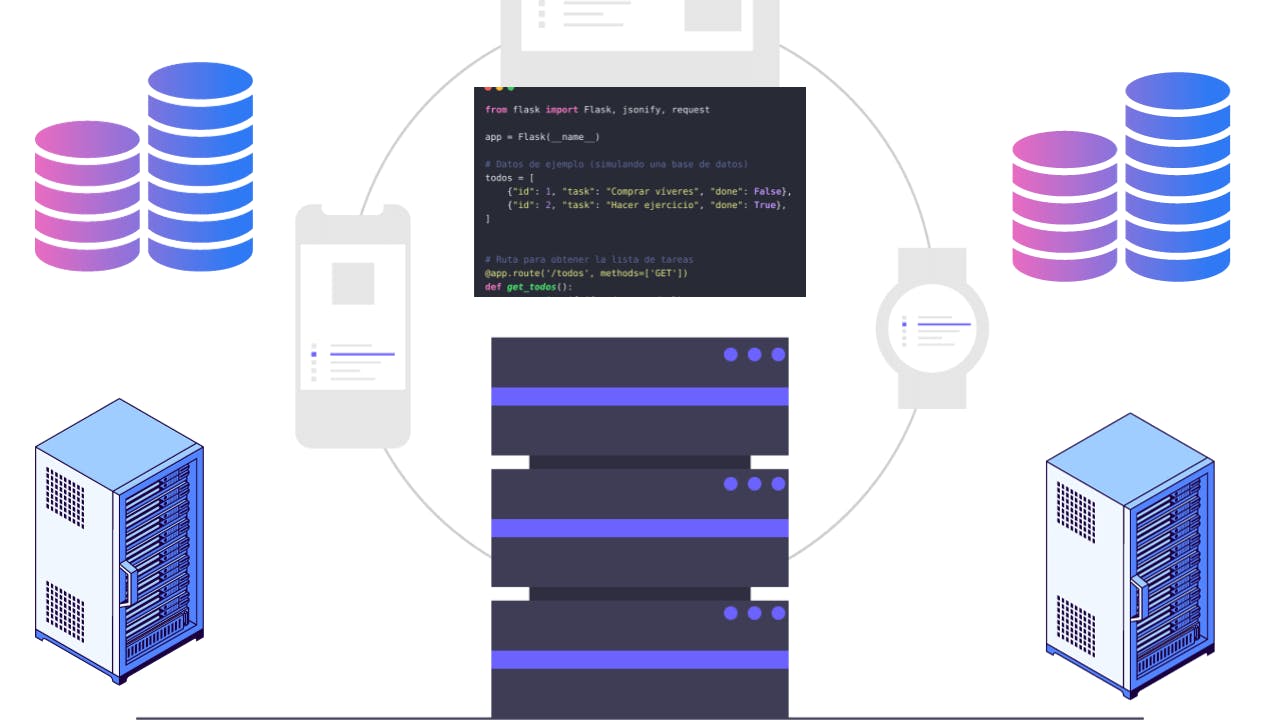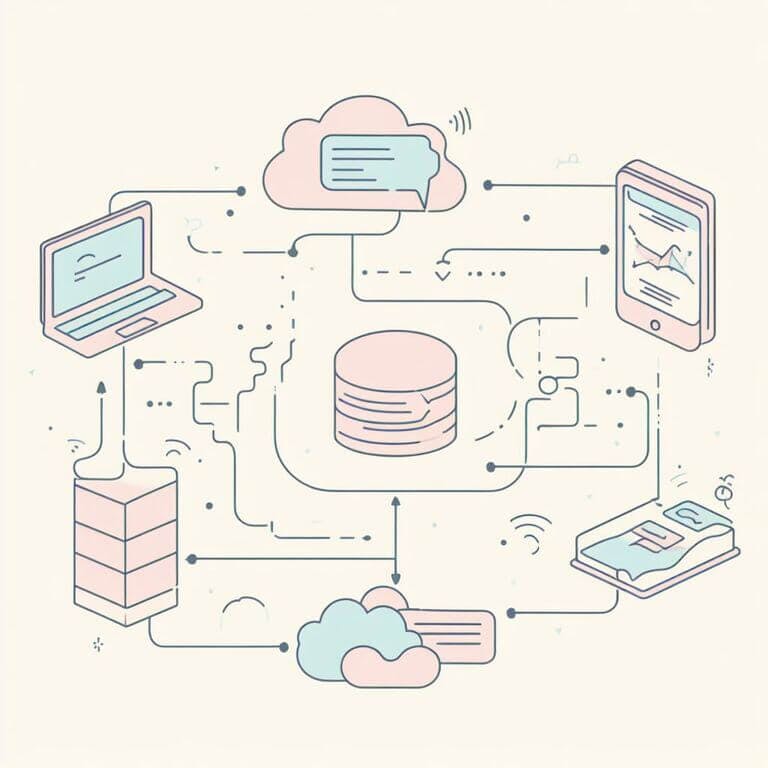What is the backend, and why is it important for web development?
When you visit a website, what you see in your browser is the result of a series of processes that occur on the client side (frontend) and the server side (backend).
The backend deals with the logic, storage, and communication of data. In this article, we explain what the backend is, what its functions are, and what skills are required to be a backend developer.

What is the backend and how does it work?
The backend is the invisible part of a web application that runs on the server, i.e., on a remote machine that hosts the files and databases of the application. The backend communicates with the frontend through an interface called an API (Application Programming Interface), which defines the rules and formats for exchanging information between both sides.
The backend receives requests from the frontend, processes them according to the application's logic, accesses data stored in databases or other external services, and returns a response to the frontend, which displays it to the user.
The backend consists of three main elements:
- Programming language: This is the code that defines the logic and operation of the application. There are many programming languages that can be used for the backend, such as Python, Java, PHP, Ruby, Node.js, etc. Each has its advantages and disadvantages and is better suited to certain types of projects or needs.
- Framework: This is a set of tools and libraries that facilitate the development and organization of code, providing common and predefined functionalities such as authentication, validation, routing, error handling, etc.
Some examples of frameworks are Django, Flask, Spring Boot, Laravel, Rails, Express, etc. The framework is chosen based on the programming language and project characteristics. - Database: This is the system that stores and manages the application's data, such as users, products, orders, etc. There are two main types of databases: relational and non-relational.
Relational databases, like MySQL, PostgreSQL, Oracle, etc., are based on the table, row, and column model and are governed by the SQL (Structured Query Language).
Non-relational databases, like MongoDB, Firebase, CouchDB, etc., are based on the document, collection, and field model and are governed by the NoSQL (Not Only SQL) language.
What functions does a backend developer have?
A backend developer is a professional responsible for designing, implementing, and maintaining the backend of a web application. Among their main tasks and responsibilities are:
- Defining the architecture and structure of the application, considering aspects such as scalability, security, performance, modularity, etc.
- Choosing the most suitable programming language, framework, and database for the project based on requirements and specifications.
- Writing backend code following programming best practices, language and framework standards, and quality conventions.
- Creating and consuming APIs using appropriate protocols and formats such as HTTP, REST, GRAPHQL, JSON, XML, etc.
- Conducting unit, integration, and load tests to verify the correct functioning and robustness of the application.
- Debugging and resolving errors and issues that may arise in the backend using debugging, logging, monitoring tools, etc.
- Documenting the code and API to facilitate maintenance and collaboration with other developers.
- Implementing security measures such as encryption, authentication, authorization, etc., to protect data and the application from potential attacks or vulnerabilities.
- Deploying and updating the application on the server using automation tools, continuous integration, and continuous delivery, such as Git, Docker, Jenkins, etc.

What is the difference between the backend and frontend?
The backend and frontend are two essential parts of a web application, but they have important differences that need to be considered. Some of them are as follows:
- The backend runs on the server, while the frontend runs in the client's browser.
- The backend is responsible for logic, storage, and data communication, while the frontend handles presentation and user interaction.
- The backend uses programming languages like Python, Java, PHP, etc., while the frontend uses languages like HTML, CSS, and JavaScript.
- The backend communicates with the frontend through an API, while the frontend communicates with the backend through HTTP requests.
- The backend requires knowledge of databases, APIs, security, etc., while the frontend requires knowledge of design, layout, animation, etc.
What skills are required to be a backend developer?
To be a backend developer, a series of technical and non-technical skills are required to efficiently and professionally create and maintain the backend of a web application. Some of these skills include:
- Mastery of at least one programming language and a backend framework, such as Python and Django, Java and Spring Boot, PHP and Laravel, etc.
- Understanding of object-oriented programming principles, such as abstraction, encapsulation, inheritance, polymorphism, etc.
- Knowledge of design patterns, such as MVC (Model-View-Controller), DAO (Data Access Object), Singleton, Factory, etc.
- Familiarity with relational and non-relational databases, such as MySQL, MongoDB, etc., and SQL and NoSQL languages.
- Knowledge of APIs, protocols HTTP, REST, GRAPHQL, JSON, XML, etc.
- Familiarity with testing, debugging, logging, monitoring tools, such as Pytest, Postman, Debugger, Logger, etc.
- Familiarity with automation tools, continuous integration, and continuous delivery, such as Git, Docker, Jenkins, etc.
- Knowledge of security measures, such as encryption, authentication, authorization, etc.
- Understanding of scalability, performance, optimization concepts, etc.
- Analytical skills, problem-solving, logical and algorithmic thinking.
- Learning, adaptability, innovation, and constant updating capability.
- Communication, collaboration, teamwork, and documentation skills.
The backend is key to web development
The backend is an essential part of a web application, responsible for business logic, data storage and management, security, and communication with other services.
I hope this article has been helpful in understanding what the backend is and why it is important for web development. If you liked it, please share it. And if you need a backend developer with Node.js for your project, feel free to contact me. I'll be happy to help.